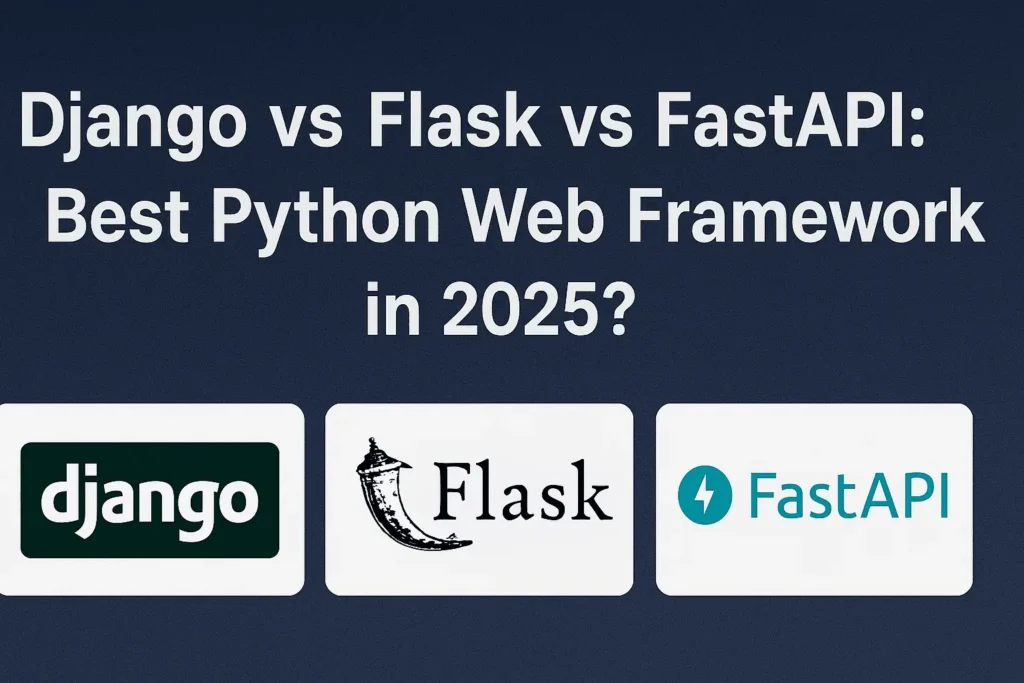
When it comes to web development with Python in 2025, developers are spoilt for choice. Three major frameworks dominate the scene: Django, Flask, and FastAPI. Each has its strengths, weaknesses, and ideal use cases. But which one is the best for your project in 2025?
In this article, we’ll explore the latest trends, performance benchmarks, community support, and real-world applications of each framework to help you make an informed decision.
Django: The Full-Stack
Django is a high-level Python web framework that promotes fast development and simple, practical design. It includes a variety of built-in capabilities, such as an Object-Relational Mapping (ORM), an admin interface, user authentication, and security protections. It’s an ancient framework—initial release date: 21 July 2005.
pip install djangoWhat’s New in 2025:
- Improved support for async views.
- Native WebSocket integration using Django Channels.
- Better ORM performance and database indexing.
- Tight integration with AI APIs and ML libraries.
Advantages:
- Everything you need is built-in.
- Excellent for large-scale applications.
- Mature ecosystem with thousands of plugins.
- Excellent security features are included out of the box.
Disadvantages:
- The monolithic structure can be overkill for simple apps.
- Slower performance compared to lighter frameworks.
- Large filesystem for small applications.
Use Cases:
- ERP & CRM systems
- E-commerce platforms
- Government & enterprise portals
Flask: The Lightweight Microframework
Flask is a simple and adaptable microframework. It provides the tools you need to quickly construct web apps without requiring a specific project layout or dependencies.
pip install FlaskWhat’s New in 2025:
- Enhanced support for async/await with Werkzeug.
- Improved integration with Jinja3 and SQLModel.
- Smaller footprint for container-based deployment.
Advantages:
- Extremely lightweight and flexible.
- Easy to learn for beginners.
- Ideal for microservices and smaller apps.
Disadvantages:
- You need to manually add many things (auth, admin panel, etc.).
- It can get messy in large applications if not structured well.
- No native support for async in older projects.
Use Cases:
- Prototyping and MVPs
- Small web applications
- Single-purpose tools
FastAPI: The Rising Star
FastAPI is a modern, fast (high-performance) web framework for creating APIs in Python 3.7+ using standard Python type hints. It is an async-first framework developed on top of Starlette and Pydantic.
pip install fastapiWhat’s New in 2025:
- Fast response time with HTTP/3 and ASGI advancements.
- Real-time capabilities with WebSocket and Server-Sent Events.
- First-class support for GraphQL and OpenAPI v4.
- Enhanced interface with LLM APIs and AI workflows.
Advantages:
- Fastest performance among the three (comparable to Node.js & Go).
- Automatic docs via Swagger/OpenAPI.
- Type safety with Pydantic makes debugging easy.
- Async-ready by default.
Disadvantages:
- Smaller community compared to Django.
- Still maturing; lacks some features.
- More suited for APIs than full-stack apps (though Frontend + Jinja2 support is improving).
Use Cases:
- High-performance APIs
- AI/ML model serving
Conclusion
All three frameworks are actively maintained and serve different purposes. In 2025, developers are moving toward FastAPI for performance and API-centric applications, but Django remains unbeatable for full-featured web apps, while Flask continues to be the go-to for lightweight projects.

